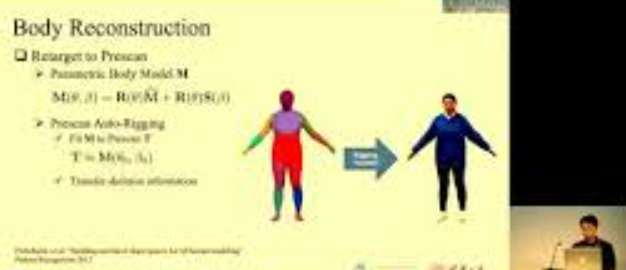Towards Fully Mobile 3D Face, Body, and Environment Capture Using Only Head-worn Cameras
PubDate: September 2018
Teams: UNC Chapel Hill
Writers: Young-Woon Cha; True Price; Zhen Wei; Xinran Lu; Nicholas Rewkowski; Rohan Chabra; Zihe Qin; Hyounghun Kim; Zhaoqi Su; Yebin Liu;Adrian Ilie;Andrei State;Zhenlin Xu;Jan-Michael Frahm;Henry Fuchs
PDF: Towards Fully Mobile 3D Face, Body, and Environment Capture Using Only Head-worn Cameras

Abstract
We propose a new approach for 3D reconstruction of dynamic indoor and outdoor scenes in everyday environments, leveraging only cameras worn by a user. This approach allows 3D reconstruction of experiences at any location and virtual tours from anywhere. The key innovation of the proposed ego-centric reconstruction system is to capture the wearer’s body pose and facial expression from near-body views, e.g. cameras on the user’s glasses, and to capture the surrounding environment using outward-facing views. The main challenge of the ego-centric reconstruction, however, is the poor coverage of the near-body views - that is, the user’s body and face are observed from vantage points that are convenient for wear but inconvenient for capture. To overcome these challenges, we propose a parametric-model-based approach to user motion estimation. This approach utilizes convolutional neural networks (CNNs) for near-view body pose estimation, and we introduce a CNN-based approach for facial expression estimation that combines audio and video. For each time-point during capture, the intermediate model-based reconstructions from these systems are used to re-target a high-fidelity pre-scanned model of the user. We demonstrate that the proposed self-sufficient, head-worn capture system is capable of reconstructing the wearer’s movements and their surrounding environment in both indoor and outdoor situations without any additional views. As a proof of concept, we show how the resulting 3D-plus-time reconstruction can be immersively experienced within a virtual reality system (e.g., the HTC Vive). We expect that the size of the proposed egocentric capture-and-reconstruction system will eventually be reduced to fit within future AR glasses, and will be widely useful for immersive 3D telepresence, virtual tours, and general use-anywhere 3D content creation.

